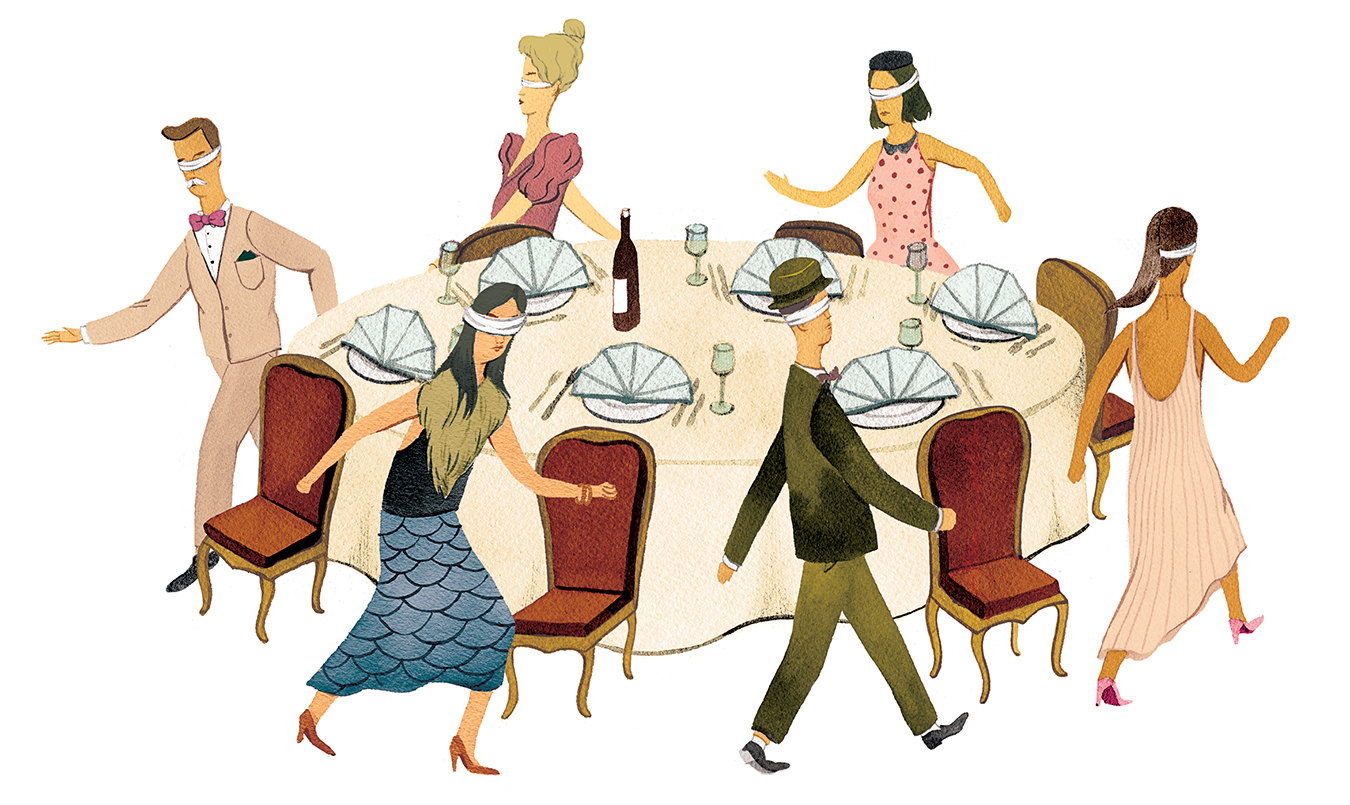Place-Card Politics
Seating arrangements and arraignments.

Hallelujah. What’s even more remarkable than the sight of Princess Charlene singing jubilantly along to a rendition of Leonard Cohen’s now-classic hymn at a dinner I attended in Montreal a year and a half ago? The realization that the Monaco royal—as I observed at a gala held to fete the 100th anniversary of the grande dame Ritz-Carlton—was, this night, unleashing her vocal pyrotechnics while seated right next to her husband.
Oh, yes. Throw out your Emily Post etiquette handbook. It is, possibly, in the instance of Prince Albert, a classic case of keeping your friends close and your bride even closer.
At the annual British Academy Film Awards in London—an event that attracts another sort of royalty, the British thespian kind—the plus-one stickiness also did not go unnoticed by me. During a tony post-award supper held at Grosvenor House the year I attended, a solid quorum of the couples sat side by side. Exhibit A: those delightful eccentrics Helena Bonham Carter and Tim Burton.
Et tu, White House? The chattering classes were all abuzz when the Obamas—throwing their first official state dinner, in honour of the Prime Minister of India, Manmohan Singh—ordained that couples would be seated together, rather than at separate tables. A rebuke, indeed, to the ancient etiquette.
Progress? Or triumph of the ho-hum? I lean toward the latter in my analysis. I’m with Washington journalist (and über-hostess) Sally Quinn, who, musing on the doings at 1600 Pennsylvania Avenue, wrote, “I find that it saps the energy from the table when spouses are practically in each other’s laps … If it’s a large dinner and couples are at the same table, that’s fine, but they still shouldn’t be right next to each other.”
She continued: “If you’re sitting next to someone else, you’re going to learn something about that person, his or her ideas and opinions … It’s a challenge, an opportunity, an occasion! It totally changes the dynamics and it electrifies the table.”
Indeed, without this, why bother leaving the house at all? The history of dinner seating, like the history of art, yo-yoes between moments of brilliance and periods of stagnation, and the politics of place cards is a tricky business. (How many times have I caught should-know-better socialites switching their place cards before a din-din—or special requests being made in advance.) But here’s another theory: sticking with the one who brought you makes us lazy. Social skills, like any other muscle, have to be exercised; otherwise they get frail. And the vogue for spousal security blankets? They’re making us conversationally hunchbacked.
Joan Rivers—known forever for her Brooke Astor–level dinners at her Upper East Side pad—is on to something, I think, with her seating modus operandi. She never places partners beside one another, and furthermore, she makes a point of giving cheat sheets to guests. “Under everyone’s plate,” she’s revealed, “I write down two facts: a fact about the person on your right and a fact about the person on your left.”
Moreover, according to the Tao of Joan, “Nobody can get up later and say, ‘Who knew he discovered penicillin?’ or, as you walk out the door, ‘I had no idea he slept with Angelina Jolie!’ ”




